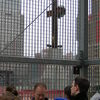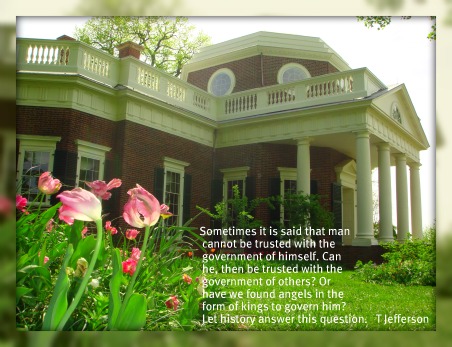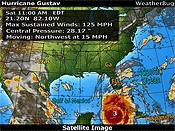Foundation For Moral Law--Honoring God
 Wednesday, November 30, 2011 at 01:17PM
Wednesday, November 30, 2011 at 01:17PM It is truly an act of grace from God to give us memorials of his goodness and that when He lives in men's hearts that wonders never cease. One of those is a story among many woven in truth as only God can. Please go to morallaw.org and read the blogs--here is one for Thanksgiving worth sharing to all:
The Angel of Hadley and Judges Cave: A Robust Thanksgiving Tale

The Angel of Hadley and Judges Cave: A Robust Thanksgiving Tale
Last weekend I made my annual “pilgrimage” to Plymouth, Massachusetts, for a Board meeting of the Plymouth Rock Foundation. The hallowed landmarks continue to inspire: the statue of William Bradford, the statue of Chief Massassoit, the vault containing the bones of many of the pilgrims who died during the first winter, the Church of the Pilgrimage, the Old Burial Hill, Old Plimoth Plantation, the replica of the Mayflower, and of course Plymouth Rock.
On Saturday afternoon I drove three hours west to New Haven, Connecticut, and a nearby town called Milford, to preach Sunday morning for the Milford Christian Church, a wonderful group of believers led by Pastor Jim Loomis and his wife Cathy.
Just as Plymouth was the home of the Pilgrims, so New Haven was the “haven” of the Puritans. McManus describes New Haven as the “ultra-puritan” colony,[1] and Pfeffer said New Haven was “possibly more extreme in its theocracy than Massachusetts.”[2] And as Pastor & Mrs. Loomis showed me Saturday night, New Haven is a treasure-house of colonial Christian history. In the course of an hour or so I viewed the graves of Constitutional Convention delegate Roger Sherman and “America’s schoolmaster” Noah Webster, a statue of Lt. Nathan Hale on the campus of his alma mater Yale University (founded in 1701 to counter apostasy at Harvard), and three converging streets named Dixwell, Whalley, and Goffe.
Sunday after church I hiked up the trail in West Rock Ridge Park to view and explore Judges Cave (above), a huge collection of boulders with inside passages at the top of a large cliff overlooking New Haven below, and the Regicides’ Trail that leads to it.
Dixwell, Whalley, Goffe, and Judges Cave? How do these tie together? That’s the robust tale.
But the tale begins in England, where, in 1649, the Puritan Parliament captured the royalist King Charles I and tried him for treason because of his acts of tyranny and making war on the Parliament. With good justification, Parliament claimed to be the legitimate representatives of the people of England, and therefore, when Charles made war upon Parliament, he waged war against the English people. Charles was convicted of treason and executed on 30 January 1649; fifty-nine commissioners (judges) appointed by Parliament signed the King’s death warrant.
Fast-forward to 1660, when the Cromwell Protectorate was ended and the monarchy restored with Charles II, son of Charles I, as England’s king. In a spirit of some generosity Charles II agreed to clemency for all who had opposed his father, except for the fifty-nine judges who had signed his death warrant. Of these, nine or ten were executed; others were imprisoned, exiled, or barred from holding public office.
Three – Dixwell, Whalley, and Goffe, fled to North America, believing they would be safest in the Puritan colonies of New England.
John Dixwell (1607 – 1689), had served as a colonel in the Parliamentary army and as a member of Parliament. He was condemned to death as a regicide (king-killer), but he escaped execution by fleeing to New Haven, where he lived under the assumed name of John Davids. Unlike the others, Dixwell/Davids was the subject of no manhunts because the English assumed he was dead, and even in New Haven few if any knew his true identity until he was on his deathbed. He held a constant hope that there would be a rebirth of liberty in England, and before he died in 1689 he may have learned of the Glorious Revolution of 1688 and of plans for the English Bill of Rights that was to follow.
Dixwell’s years in exile seem to have been calm and peaceful if uneventful. Not so with Edward Whalley (c. 1607 – c. 1675) and his son-in-law William Goffe (1605? – 1679?). Whalley distinguished himself as a regimental officer in the Parliamentary army, rising to the rank of lieutenant general. He was entrusted with the care of the captured King Charles I, treated his captive with courtesy, and refused orders to remove Charles’s chaplains, for which Charles wrote him a letter of thanks. Goffe rose to the rank of major general and commanded a regiment at the Battle of Dunbar and the Battle of Worcester.
Whalley and Goffe landed in Boston on 27 July 1660. The Puritan populace received them kindly, but there was always danger from royal informants. Sensing danger, in February 1661 they left Massachusetts, and they arrived in New Haven 7 March. The Puritan Rev. John Davenport housed them, but New Haven Governor William Leete received word that he would soon receive orders for their arrest. Leete managed to delay the orders, giving them time to flee into the wilderness.
Most of the summer of 1661 they spent in Judges Cave. Without naming them or discussing their situation, Rev. Davenport preached a sermon to his congregation on Isaiah 16:3: “Hide the outcasts; discover not him that wandereth.” His Puritan congregants knew his meaning, and each night they sent provisions to a place near Judges Cave.
The English weren’t the judges’ only fear. One night they heard a haunting howl outside, and came to the entrance and found themselves face-to-face with a panther. That, coupled with growing English suspicions that they were in the area, led them to flee again, this time to the small town of Hadley, Massachusetts, where Rev. John Russell sheltered them in the cellar of his house. Dixwell may have joined them there for awhile. There they kept a diary for six or seven years, and Goffe conducted correspondence with his wife under the pseudonym of Walter Goldsmith. The diary and letters contain much of Hadley’s history, although Professor Miller says “there is too much religion in their letters for the taste of the present day.”[3] Despite intense searches, the English never found them. In 1675 Whalley was still alive but in poor health; he probably died shortly thereafter.
Whalley and Goffe in Massachusetts make their home.
Then to Quinnipiac in haste pursue their way,
Nor know they where to rest, nor where to roam,
Until in Hadley concealed and lonely they stay.[4]
Until he died around 1679, Goffe lived an uneventful life in hiding – or did he?
In 1675 the Wampaqnoag war chief popularly known as King Philip led a coalition of tribes in warfare against the European settlers of New England. It is said that his warriors conducted a surprise attack on the village of Hadley in September 1675. Patrick Browne writes,
According to legend, such an attack struck Hadley in September of 1675 while the inhabitants were at worship. When the alarm was raised, men grabbed their weapons and ran out to meet the attack. Completely disorganized, confused and afraid, many of them unarmed, the settlers of Hadley were in no way prepared to defend themselves. The utter annihilation of the town seemed imminent.
Suddenly, in the midst of this chaos appeared an elderly man carrying an old sword. No one had seen him before. He seemed out of place, quite different than the rest of the settlers. His bearing was distinctly military. He coolly placed himself in command, rallied the settlers, and quickly instructed them as to how they should fight. The attack was repulsed. As soon as the conflict had ended, the mysterious stranger disappeared, leaving many to wonder if he had been an angel from God.[5]
Some doubt his existence. Some doubt whether the attack ever occurred, as there is no mention of it in the town annals, but such records are often incomplete. Increase Mather described the attack in his 1676 history of King Philip’s War, but he mentioned no angel or commanding figure.
But what if an old judge, a judge who had served as a major general in the army of Oliver Cromwell and the Parliament, had been hiding in the cellar of Rev. Russell’s home, and emerged at the hour of peril to protect his protectors?
This is not idle speculation on my part. Thomas Hutchinson, then Lt. Gov. of Massachusetts, in his 1764 History of Massachusetts, related the attack and identified the old man as General William Goffe. The Rev. Ezra Stiles, President of Yale (whose grave I saw Saturday night), in his 1794 A History of Three of the Judges of Charles I, likewise identified the Angel of Hadley as General Goffe. Stiles wrote:
That pious congregation were observing a fast at Hadley, on the occasion of the war; and being at public worship in the meeting-house there, on a fast day, September 1, 1675, were suddenly surrounded and surprised by a body of Indians. It was the usage in the frontier towns, and even at New Haven, in those Indian wars, for a select number of the congregation to go armed to public worship. It was so in Hadley at this time. The people immediately took to their arms, but were thrown into great consternation and confusion. Had Hadley been taken, the discovery of the Judges had been inevitable. Suddenly, and in the midst of the people there appeared a man of very venerable aspect, and different from the inhabitants in his apparel, who took the command, arranged and ordered them in the best military manner, and under his direction they repelled and routed the Indians, and the town was saved. He immediately vanished, and the inhabitants could not account for the phenomenon, but by considering that person as an Angel sent of God upon that special occasion for their deliverance; and for some time after said and believed that they had been delivered and saved by an Angel. . . . The Angel was certainly General Goffe.[6]
Whatever happened at Hadley, the story inspired New Englanders at that time, and it also inspired later generations. Sir Walter Scott used the Angel of Hadley as a model for his tale in Peravil of the Peak in 1823, Nathaniel Hawthorne used the Angel as a model for The Gray Champion, and James Fenimore Cooper, Delia Bacon, and Harriet Beecher Stowe all wrote tales based on the Angel of Hadley. Henry David Thoreau referred to Goffe in Walden as though his name were a household word. The late University of Pennsylvania Archivist Douglas Wilson suggested that Goffe wanted to be remembered as a shadowy, ethereal figure, not only to inspire, but also to evade discovery and arrest.[7] That might explain why the people of Hadley did not record the attack.
Back at Judges Cave, I was reminded that these three judges, all fervent Puritans who were willing to fight and die for their Lord, sacrificed their careers, their estates, and their creaturely comforts to wander as outcasts in the wilderness, to secure and preserve the God-given blessing of liberty. In an age of abject submission to total government, it is hard to remember an era in which Christian men believed it was necessary to interpose by force against a tyrannical king, and a later age in which place of refuge would be honored as Judges Cave and the path to the cave as Regicides Trail. The plaque on Judges Cave says it best:
JUDGES CAVE
Here May Fifteenth 1661 and for some weeks
thereafter Edward Whalley and his son-in-law
William Goffe, members of the Parliament General,
officers in the army of the Commonwealth and
signers of the death warrant of King Charles
First, found shelter and concealment from the
officers of the Crown after the Restoration.
“Opposition to tyrants is obedience to God.”
1896
Contemplate the price of liberty, and have a truly blessed Thanksgiving!
[1] Edgar J. McManus Law and Liberty in Early New England: Criminal Justice and Due Process 1620 – 1692 (University of Massachusetts Press 1993) 17.
[2] Leo Pfeffer, Church, State and Freedom (Beacon Press 1953) 68.
[3] Jon Miller, Associate Professor of Englilsh, University of Akron, “Thomas Hutchinson and Ezra Stiles on the Regicides” (1764, 1794).
[4] Lewis Sprague Mills, “The Story of Connecticut” (1932).
[5] Patrick Browne, “The ‘Angel of Hadley,’” Historical Digression (blog), September 5, 2011.
[6] Ezra Stiles, quoted by Miller op. cit.
[7] Wilson, Douglas C. “Web of Secrecy: Goffe, Whalley, and the Legend of Hadley.” New England Quarterly LX (1987): 515-548.










